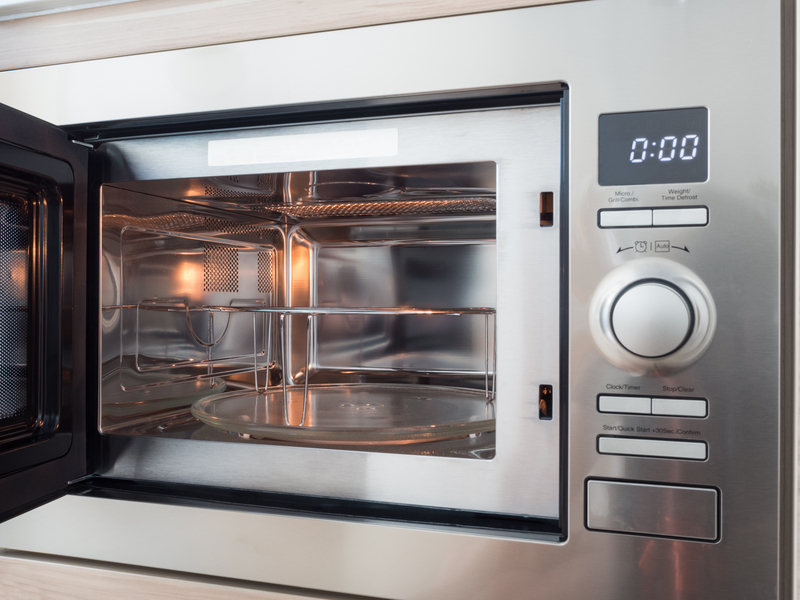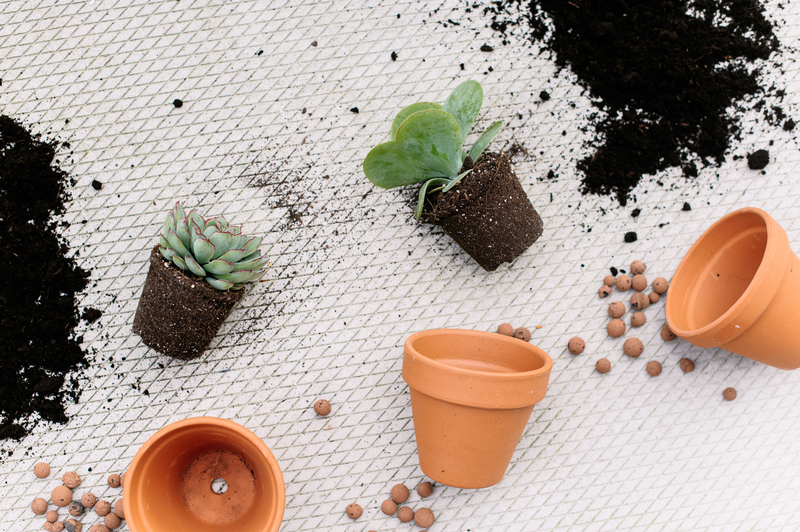Elevate your home hygiene by keeping it dust-free and reducing allergens
Posted on 20/06/2025
Elevate Your Home Hygiene by Keeping It Dust-Free and Reducing Allergens
Discover the secrets to a cleaner, healthier home environment. Learn practical strategies to keep your home dust-free, significantly reduce allergens, and create a sanctuary of comfort and well-being for your loved ones.
Why Prioritize a Dust-Free and Allergen-Reduced Home?
Keeping your living space clean goes far beyond aesthetics. Maintaining a dust-free home and reducing allergens significantly impacts your health, comfort, and overall quality of life. Dust and indoor allergens can trigger respiratory issues, worsen allergies, and even threaten the well-being of vulnerable individuals such as children, seniors, and those with compromised immune systems.
- Chronic exposure to dust mites and allergens is a leading cause of indoor allergies.
- Cleaner homes foster a healthier living environment for everyone.
- Systematic dust reduction strategies can lead to fewer asthma attacks and allergic reactions.
Elevate your home hygiene by keeping it dust-free and reducing allergens--not only will you breathe easier, but you'll also enjoy a fresher, more welcoming space every day.

Understanding Dust and Common Indoor Allergens
Before launching into actionable steps, it's essential to grasp what comprises household dust and which common allergens lurk within our homes. Only then can we effectively tackle these culprits head-on.
What is Household Dust?
Household dust is a complex mixture, including:
- Dead skin cells
- Pet dander
- Pollen particles
- Fabric fibers
- Dust mite debris
- Mold spores
- Outdoor pollutants (often tracked in on shoes or via open windows)
Major Indoor Allergens in Domestic Spaces
Indoor air quality is often compromised by:
- Dust mites: Microscopic organisms feeding off dead skin flakes
- Pet dander: Tiny, even invisible flecks from animal skin, fur, or feathers
- Mold spores: Thriving in moist environments
- Pollen: Carried indoors on clothes, hair, or pets
- Cockroach droppings: Particularly problematic in urban apartments
Understanding these sources is the first step to elevate your home's hygiene by tackling dust and allergens.
Top Strategies to Keep Your Home Dust-Free and Allergen-Reduced
From cleaning routines to targeted investments, there are multiple avenues to achieving a healthier, more breathable indoor environment.
1. Establish a Robust Cleaning Schedule
Consistency is key to breaking the dust and allergen accumulation cycle. Routine cleaning--when performed effectively--can drastically minimize triggers for allergies and asthma.
- Vacuum all carpets and rugs: At least twice a week using a vacuum equipped with a HEPA filter.
- Damp dust surfaces: Use microfiber cloths to trap (rather than disperse) dust particles.
- Mop hard floors: Opt for microfiber or electrostatic mops for maximum efficiency.
- Launder bedding and curtains: Wash weekly in hot water to kill mites and remove allergen build-up.
2. Choose the Right Tools and Equipment
Outdated or inadequate cleaning tools may actually worsen the problem by stirring up dust instead of removing it.
- HEPA Vacuum Cleaner: Traps fine particles and allergens that ordinary vacuums leave behind.
- Microfiber Cloths: Hold onto dust without dispersing it into the air.
- Allergen-proof mattress and pillow covers: These create a barrier against dust mites and dander.
- Air Purifiers: Units with HEPA filters continuously remove airborne dust and allergens from indoor air.
3. Minimize Clutter
Cluttered rooms act as dust magnets and make cleaning considerably more challenging. Reducing clutter is a significant step in elevating home hygiene by keeping it dust-free and lowering allergen levels.
- Store items in closed bins or cabinets.
- Regularly donate, recycle, or discard unused objects.
- Limit display of books and knick-knacks, especially in bedrooms.
4. Optimize Indoor Air Quality
Indoor air frequently contains up to five times more pollutants than outdoor air. Good ventilation and air filtration are pivotal in managing household allergens.
- Open windows regularly to allow fresh air exchange (if pollen count is low).
- Use exhaust fans in kitchens and bathrooms to reduce humidity and mold risk.
- Invest in a quality air purifier with a HEPA filter for bedrooms and living areas.
5. Control Humidity Levels
Mold, mildew, and dust mites thrive in damp environments. Maintaining ideal humidity levels (between 30-50%) is crucial for keeping allergens at bay.
- Use a dehumidifier in basements and other prone areas.
- Repair leaky pipes, faucets, and roof tiles promptly.
- Ensure proper ventilation in laundry rooms and bathrooms.
Targeted Tactics for Specific Rooms
Bedroom: Your Restful Sanctuary
Given how much time we spend sleeping, the bedroom should be a top priority for dust and allergen control.
- Encase mattresses, duvets, and pillows in allergen-proof covers.
- Wash all bedding weekly in hot water.
- Consider replacing wall-to-wall carpeting with hard flooring.
- Keep pets out of bedrooms to prevent the spread of animal dander.
Living Room: High Traffic, High Exposure
- Frequently vacuum sofas and cushions using appropriate attachments.
- Limit fabric decor and use washable slipcovers where possible.
- Use blinds or washable curtains instead of heavy drapes.
Bathroom and Kitchen: Mold and Humidity Hotspots
- Clean tiles and grout with mold-inhibiting solutions.
- Ensure exhaust fans are working efficiently.
- Regularly empty and sanitize trash bins.
Pet Management: Loving Pets Without Allergic Reactions
Pets are beloved members of our families, but their dander can be a potent allergen. To elevate home hygiene by keeping it dust-free and reducing allergens in pet-friendly homes:
- Groom pets outdoors and bathe them regularly using vet-recommended shampoos.
- Wash pet bedding and toys often.
- Restrict pets from bedrooms and soft furnishings.
- Use high-filtration vacuum cleaners for fur and dander removal.
Smart Habits for Everyday Allergen Reduction
- Remove shoes at the door to prevent outdoor pollen and debris from entering.
- Change clothes and shower after spending time outdoors during high pollen seasons.
- Never smoke indoors, as smoke particles greatly exacerbate indoor air pollution.
- Regularly replace HVAC and air purifier filters for optimal performance.
Seasonal Deep Cleaning: Boosting Home Hygiene Year-Round
In addition to routine cleaning, seasonal deep cleans create opportunities to refresh your environment and tackle overlooked areas.
- Wash windows, screens, and window sills to prevent pollen accumulation.
- Clean behind and beneath heavy furniture and appliances.
- Rotate mattresses and vacuum thoroughly.
- Inspect and clean air ducts and vents.
- Declutter storage spaces, attics, and garages.
Reducing Allergens Through Smart Design Choices
Remodeling or redecorating? Make choices that naturally support your goal of a dust-free, allergen-reduced home.
- Opt for hard flooring--such as tile, hardwood, or laminate--over carpets in allergy-prone homes.
- Select washable window treatments.
- Avoid wall-to-wall carpeting and heavy fabric upholstery.
- Choose low-VOC and non-toxic paints for improved air quality.

Frequently Asked Questions on Home Hygiene, Dust, and Allergens
How often should I clean to keep my home dust-free?
Aim for weekly cleaning routines, with daily quick cleans in high-traffic areas. During allergy season, more frequent cleaning is beneficial.
Do air purifiers really help reduce indoor allergens?
Yes! HEPA air purifiers can significantly reduce airborne dust, pollen, dander, and mold spores, making them excellent investments for allergic households.
Is it possible to eliminate dust entirely?
Unfortunately, eliminating household dust completely is unrealistic. However, with consistent efforts, you can dramatically minimize its presence and the accompanying allergens.
Conclusion: Elevate Your Quality of Life by Reducing Dust and Allergens
A dust-free, allergen-reduced home isn't just a dream--it's a practical goal within your reach. By understanding the hidden sources of allergens and implementing effective daily and seasonal cleaning strategies, you will elevate your home hygiene while creating a safer, more comfortable space for your family.
Start today--your lungs, your loved ones, and your peace of mind will thank you!
Key Takeaways to Keep Your Home Dust-Free and Reduce Allergens:
- Create and maintain a structured cleaning routine.
- Use high-efficiency cleaning tools and allergen barriers.
- Minimize clutter and choose washable decor.
- Prioritize pet care and smart design choices.
- Adapt your strategy seasonally for long-term results.
For more tips on elevating your home hygiene by keeping it dust-free and reducing allergens, bookmark this article and integrate these strategies into your everyday routine. Here's to healthier, happier living--one clean step at a time!




